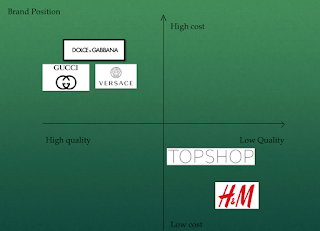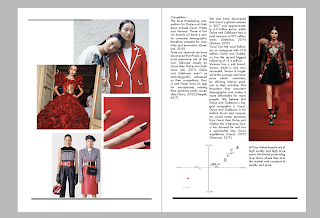Brand Report Guide
Lecture notes:
Brand Marketing Report
The basics of writing in an academic structure.
Any written piece needs a structure:
• Anything you write needs a clear beginning middle and end
• Critically, what you write needs to be logical
Example outline of a business report
• Title page
• Contents page
• Introduction
• Mid section of the report - deals with the key issue’s discussion
• Conclusion
• Recommendations (from your report research and findings)
• Bibliography
• Appendices
Exactly how does this content break down?
Title page -
Contents page - literally a list of all the things you discuss in. Your report in a chronological order
The contents page in picture:
Is an example of a possible page breakdown (particularly with the regard to the headers .)
Please speak with module leaders to gain a full understanding of what they specifically want you to discuss as the project develops
Contents page break down explained..
1 introduction:
• An overview of what you intend to discuss
• Keep this conversation concise as there is only so much word count you have allocated to the overall piece
• Discuss the key points of your report and your intended research
• Give a flavour of what you anticipate your findings/ research may extract ( you will give a fuller over view of your findings through your conclusion
2 headers:
• If you look at the contents page you will see a series of headers have been added ; a snap shot of this example is as to follow:
• 2 Topshop - this is the main header of the section you intends to discuss; you then go on to break this main header into sub sections; example
• 2.1 research findings; and so what were your research findings on. The brand? Write this information under this sub heading
• 2.2 initial analysis; what does your initial analysis of your research indicate about the brand reflecting on 2.1
• 2.3 current brand positioning (and so on and so forth, all the way through your discussion until you reach your conclusion)
5 conclusion
• This is a summing of your research findings/ report intentions; it rounds the whole piece off touching on the critical aspects of your discussion,
• This must be to the point and concise
6 reccomendations:
• These are your recommendations to industry from research gathered
• To complete this part of the report consider
• Why does your chosen brand have issues?
• What if anything are they doing (or need to do ) to redress this
• Where is the brand situated, where do you feel (based solidly on research ) the brand needs to be
• How can the brand intervine through its current situation; what can it do to change its fate? (consider market conditions positioning in market place consumer perception and so on and so forth)
7 bibliography
• Add all your long referencing through bibliography
8 appendices
• Can be used to relate any information that co n acts to your essay context but would not be put in the actual essay itself
• For example
• A sample of a survey you have collected
• A full quote which attaches to a segment of quote usrd in your main essay (to give the content further con text _
Basic guide to academic writing
• Make sure the font if easily legible and you can read it
• Use paragraphs and punctuation regularly; check grammar and make time to proof read
• Add visuals to your piece which under pin specific written contents you discuss in the report
• Add quotes to under pin key points you may be making in your text
• Add page numbers through the footer of the document ; this will help with understanding referencing in your bibliography for example
• Add references regularly through your piece to show where your research came from and to avoid issues of plagiarism
• Use long referencing in your bibliography
• Be objective (the report isn’t about writing your subjective view)
• Make sure there is a comparison running through your text: for example ‘when looking at Topshop online sales compared to bricks and mortar’ this apronch allows you to build your case/ debate regarding the brands strengths and weaknesses
• Make sure there is a good balance between your primary and secondary research. Generally, make sure there is a good research mix (this will be evident in your bibliography)
Plagiarism
• Is a really important issue/ problem In academic writing
• To avoid it reference your work regularly in text and list all your references in text an d in bibliography using APA
• Dont copy and paste directly from and origin source
• Time manage properly
• Remember all your contextual for is out through ‘turnitin’ which automatically detects plagiarism





Comments
Post a Comment